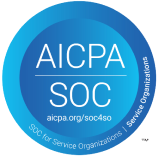Introduction
Regression testing plays a central role in maintaining product stability during continuous delivery. Each code merge, microservice update, or UI change risks introducing new defects into existing workflows. While regression suites are designed to detect such issues early, many QA teams still struggle with inefficiencies that slow releases and create coverage blind spots.
This article examines common regression testing mistakes QA leaders often encounter and practical ways to avoid them.
Common Regression Testing Mistakes (and How to Avoid Them)
1. Treating Regression Testing as a Phase, Not a Continuous Practice
Many teams still run regression tests at the end of a sprint or release cycle. This approach compresses timelines and reduces the opportunity to analyze failures meaningfully.
How to avoid it: Integrate regression testing into your CI/CD pipeline. Run smaller, incremental test suites triggered by each code commit or build. This not only shortens feedback loops but also ensures that regressions are caught when they are easiest to fix.
2. Overgrown, Unoptimized Test Suites
Over time, regression suites expand as new features are introduced. Redundant or outdated test cases increase execution time and obscure meaningful results.
How to avoid it: Retire obsolete cases, merge duplicates, and apply test-impact analysis to focus on only the areas affected by recent changes. A lean, well-prioritized suite delivers faster, more relevant feedback.
3. Lack of Traceability Between Code Changes and Test Coverage
Regression tests are often executed in bulk without visibility into which tests relate to the latest code changes. This results in redundant runs and leaves modified components with insufficient validation.
How to avoid it: Adopt a build-over-build comparison to analyze changes in performance, UI, and functionality between releases. Combined with test impact analysis or version control integration, this helps QA teams pinpoint affected areas, prioritize relevant tests, and validate only what truly changed.
4. Limited Test Data Strategy
Unreliable or inconsistent test data is one of the most common causes of false positives and false negatives in regression testing. When data doesn’t match production behavior, test results lose credibility.
How to avoid it: Build a governed test data strategy. Use synthetic datasets that mimic real data patterns, maintain referential integrity, and can be reused across builds. Automating data refresh cycles also helps maintain consistency between environments.
5. Testing Only in Controlled Environments
Regression testing often happens in stable, lab-like setups that don’t reflect how users actually experience the app. This creates a false sense of confidence as tests may pass in these ideal conditions, but users can still face issues due to differences in devices, OS versions, browsers, locations or networks.
How to avoid it: Use testing platforms that can run regression tests on real devices with diverse configurations and network conditions across global locations. This helps teams uncover issues that appear only in real user environments and maintain consistent app performance everywhere.
6. Underutilizing Regression Testing Tools
Many teams limit regression testing to functional validation and ignore changes that affect speed or responsiveness. Performance slowdowns are regressions too, and they can appear after code merges, backend updates, or UI changes.
How to avoid it: Include performance testing as part of regression cycles. Track performance KPIs including response times, resource usage, and UI stability across builds. Detecting performance issues early prevents degradation before users notice.
7. Overlooking the Value of Reporting and Collaboration
Regression results kept within QA teams limit visibility for developers and product teams. Without shared context, recurring issues go unnoticed, and teams lose time investigating the same problems across builds.
How to avoid it: Make reporting a routine part of regression testing. Share testing and performance reports after each run, highlight repeating defects, and share them with development and product teams. Clear communication turns regression results into actionable improvements.
Role of Regression Testing Tools in Scaling QA Efficiency
Regression testing tools are no longer just execution frameworks—they are orchestration layers that enable continuous validation at scale.
Modern testing platforms combine automation, analytics, and integration capabilities to streamline regression workflows:
- Impact-based execution: Automatically identifies which tests to run after each code change.
- Parallel and distributed testing: Reduces execution time across multiple environments.
- Data management and reporting: Provides end-to-end visibility into test coverage, failures, and trends.
- CI/CD integration: Embeds regression checks directly into delivery pipelines for faster release readiness.
Testing platforms such as HeadSpin enable QA teams to run automated regression tests across browsers, devices, and operating systems, ensuring test reliability in real user scenarios.
Conclusion
Regression testing remains one of the most effective defenses against product instability. However, the value it provides depends on how efficiently it’s managed. Treating it as a continuous, data-driven process supported by modern regression testing tools helps QA leaders maintain control over release quality without compromising delivery speed.
Ultimately, regression testing is not about executing every test; it’s about executing the right tests with the proper context and the right tools to protect the integrity of every release.
Make Regression Testing a Continuous, Insight-Driven QA Process. Talk to Headspin Experts
FAQs
Q1. What makes a regression suite efficient?
Ans: An efficient regression suite focuses on high-impact, frequently used features and recently modified components. It should be automated, prioritized by risk, and reviewed regularly to remove redundant or low-value tests.
Q2. Which regression frameworks are best for enterprise QA teams?
Ans: Frameworks like Selenium and Appium are widely used for regression automation in enterprise QA teams. Selenium is suited for web applications, while Appium supports mobile app testing. Both integrate well with CI/CD pipelines and enable cross-environment testing at scale.
Q3. How can QA leaders measure the effectiveness of regression testing?
Ans: Key metrics include defect escape rate, automation coverage, cycle time reduction, and the stability trend across builds. Tracking these metrics helps determine whether regression testing is reducing risk and improving the predictability of releases.



























.png)




















-1280X720-Final-2.jpg)






